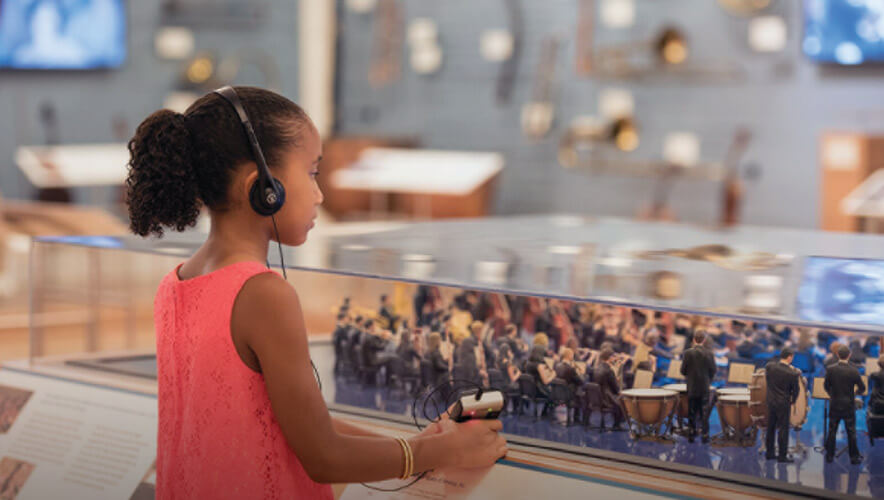Surveillance is Instrumental
Where can you go to see the iconic black suit worn by Johnny Cash, a guitar strummed by Eric Clapton, and instruments from sub-Saharan Africa, all under one roof? The Musical Instrument Museum (MIM) in Phoenix, Arizona, a 200,000 square-foot facility, is home to these and thousands of other legendary and significant instruments from around the world.
The collection is made up of more than 16,000 instruments, 6,000 of which are on display at any given time. Each year, upwards of 220,000 people visit the museum, which also has a 300-seat theater where notable musicians make regular headlines. The museum, which opened in 2010, is an affiliate of the Smithsonian Institution. “We’re constantly updating exhibits, changing things out, telling new stories,” says David Burger, security manager at the facility.
Securing this wealth of cultural items, as well as keeping the museum’s visitors safe, are top priorities for MIM, Burger says. “Very few of the exhibitions are under glass, so that creates a unique security concern between providing our guests with the world-class experience that we strive for, but also maintaining the safety of the instruments and making sure that everything is here for generations to come,” he says.
The museum employs contract security officers, in addition to police from the local precinct who act as “boots on the ground” security. “The local police are an invaluable asset to our security operations, both for the visibility and deterrence that they bring, but also their wealth of experience and knowledge,” Burger says. 
The security operations center is another vital piece of the puzzle at MIM, where contract officers monitor the approximately 200 cameras that cover the premises, as well as manage alarms and access control, and dispatch help in the case of an incident. “Our video is not just for forensics use, we actually do a lot of training and work with our security operators to be more proactive—live-monitoring the video, identifying issues before they become incidents,” Burger notes.
A couple of years ago, MIM was in the process of upgrading its existing cameras for increased situational awareness and improved analytics across the entire property. “We reached out to several manufacturers, talked to their local representatives, and found out more about their products,” he says.
After narrowing it down to a few products, MIM chose Hanwha Techwin America, formerly Samsung, and selected a variety of its camera models. “This was a multiphase project of refreshing all our cameras and getting them up to a certain standard,” says Burger. “Hanwha was selected for this portion of it, which covered all of the main public spaces, employee areas, and building perimeters.”
Approximately 70 Hanwha cameras were installed, including fisheye and pan-tilt-zoom (PTZ) cameras. For sensitive places, such as loading docks and cash-handling areas, higher megapixel cameras were deployed. Burger says MIM was attracted to Hanwha for several reasons. “The integration the Hanwha cameras had with our Genetec VMS was a big deciding factor,” he notes, explaining that the alarms, motion detection, and other features of the existing video management system are easily tied into the Hanwha cameras. There is also “plenty” of storage space on the cameras, he adds, allowing for additional analytics or other processes to be run on the edge.
The installation began in early 2015 and was completed in March 2016. With the Hanwha cameras, MIM can set video analytics to detect motion and set off alarms if appropriate. With facial detection, the analytics can differentiate a human from other moving objects like debris and small animals that would not necessarily warrant the triggering of an alarm. If the system detects unwanted motion or people, an alarm goes off in the control center to alert operators to pay attention to the monitor showing that camera. “It’s an improved efficiency, being able to automate those features so the operator isn’t constrained with watching hundreds of cameras at once, and having to make all of those decisions himself,” Burger says.
When an incident occurs that requires dispatch, control room operators notify the police at the main security desk in the front lobby. Those officers have a few monitors at their station for viewing any relevant video, as well as smartphones to receive images or video in the field.
Burger notes that, thankfully, no notable security incidents have occurred at the museum since installing the cameras. However, the day-to-day issues are easily resolved thanks to the cameras and ease of reviewing video on the Genetec VMS. “A common scenario is locating lost family members, and we’re able to pretty quickly backtrack and do some forensic searches [with the video],” he says.
Locating lost bags or spotting unattended packages is another routine event, as well as dealing with visitors’ slips, trips, and falls. “We can identify cases where somebody says things happened a certain way, and we were able to find that it wasn’t exactly the case,” notes Burger. On average, MIM keeps the video for 30 days before overwriting it, unless an incident warrants holding onto the footage longer.
Eventually Burger says MIM will integrate access control with video as well, so that alerts and alarms for doors can be tied to the appropriate cameras.
“The cameras have really increased our situational awareness, reducing potential blind spots or areas where there could have been a gap before,” he says.
--
For more information: Tom Cook, [email protected], www.hanwhasecurity.com, 201.325.2623
